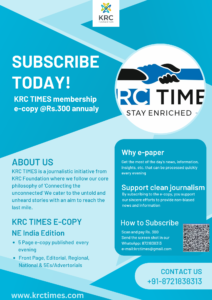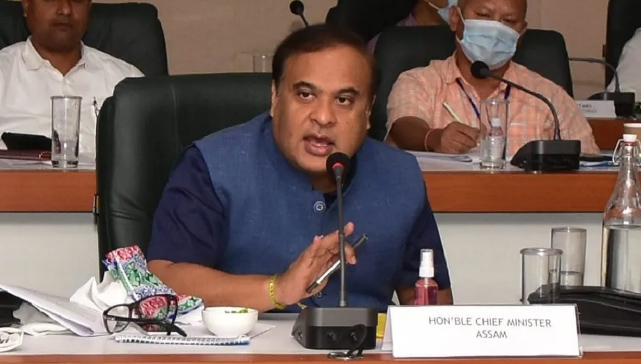This recommendation was highlighted in a tweet by Assam Minister Pijush Hazarika
 KRC TIMES Assam Bureau
KRC TIMES Assam Bureau

GUWAHATI : In a notable endorsement, Prime Minister Narendra Modi has called on other states to examine and emulate Assam’s government job recruitment model. This recommendation was highlighted in a tweet by Assam Minister Pijush Hazarika.
Taking to X, Assam Minister Pijush Hazarika wrote, “This is brilliant ! Prime Minister @narendramodi has asked other states to study Assam’s outstanding model of recruitment for govt jobs. Remember under HCM Dr @himantabiswa have recruited nearly 1 lakh government employees without a single instance of litigation”
Assam’s model has successfully facilitated the hiring of nearly 100,000 government employees without encountering any legal obstacles, earning widespread acclaim.

During a recent conclave of BJP chief ministers in New Delhi, Assam Chief Minister Himanta Biswa Sarma was lauded by senior party members and fellow chief ministers for his administration’s remarkable achievement of providing one lakh jobs within the state.
The initiative garnered special attention from Prime Minister Modi due to its seamless execution, free from controversy or public dissatisfaction.
In recognition of this success, Sarma was invited to present the recruitment strategy at the conclave. Subsequently, Prime Minister Modi directed central government officials to collect comprehensive details from Assam’s state officials. Additionally, the Assam team has been tasked with sharing their effective approach with other BJP-ruled states to foster broader implementation of this efficient model.
The Assam Model’s aggressive job creation strategy has emerged as a pivotal force in tackling unemployment and driving economic growth in the region. However, this transformative approach was not always in place.
Before 2021, Assam’s public sector recruitment faced significant hurdles, with numerous vacancies across various government departments. Inefficiencies were rampant, exacerbated by the concurrent examinations conducted by different departments. This not only confused candidates but also disrupted examination timelines, leading to widespread disarray.
The recruitment process was further marred by numerous court cases regarding examination procedures and reservation policies, along with allegations of corruption. These issues severely undermined the credibility of the recruitment process, consuming valuable resources and time, and impeding effective public service delivery due to a lack of qualified personnel.
In response to these challenges, the government, under the leadership of Himanta Biswa Sarma, implemented a swift, transparent, and cost-effective centralised recruitment system. This reform introduced direct recruitment commissions for analogous posts and state-level recruitment commissions for Class III and IV positions (SLRC-III and SLRC-IV).
The government adopted a combined appointment procedure that grouped vacant posts by qualification and conducted a common written examination for similar educational qualifications.
This approach aimed to standardise the evaluation process and reduce costs. Additionally, separate skill tests or oral interviews were conducted for final selection, ensuring a uniform recruitment approach across various departments.
Despite the initiative’s success, it faced several challenges requiring strategic interventions. One major difficulty was coordinating with 48 different departments to consolidate vacancies, standardise reservation criteria, and harmonise eligibility requirements. A leadership-driven approach was essential in streamlining these processes and ensuring consistency across departments.
Another significant challenge was managing written tests for 1.4 million candidates and conducting 58,000 interviews. Innovative measures were implemented to prevent unfair practices, and multiple interview boards were set up, capable of managing up to 1,000 interviewees daily.
By adopting such a comprehensive approach, the centralised recruitment initiative led to substantial improvements in efficiency and transparency, marking a significant milestone in Assam’s public sector employment strategy.





